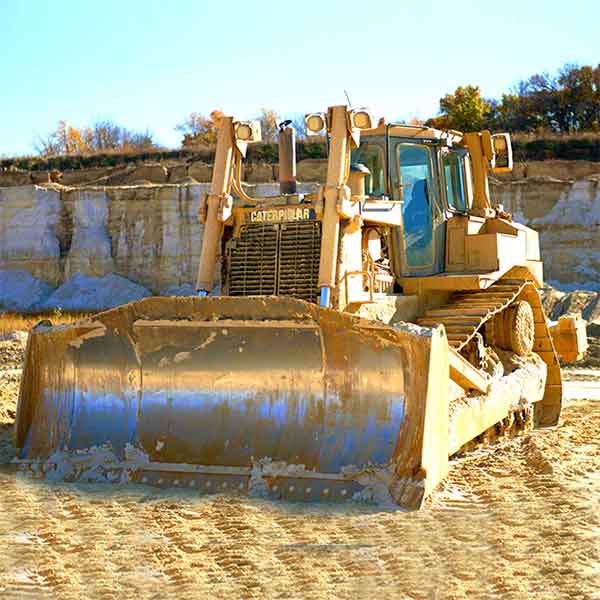Mining Process
The land in north Central Illinois cannot be described as hilly or even undulating; more like very flat. The glacial outwash plane from the last Ice Age laid down many miles of flat deep clay deposits, but also made some of the most productive farmland in the world. Soybeans and corn dominate the landscape during the summer and fall seasons. Local rivers and creeks have easily cut their way through the flat clay layers, exposing the strata below. The Little Vermillion Creek at Troy Grove, uncovered beneath the clay and white sandstone cliffs along its banks, is an unusual geological feature locally known as the Troy Grove Dome. An upthrust of the earth in some ancient time eroded off the limestone deposit commonly found above the now-exposed St. Peter sandstone. From these outcrops of sandstone, the mining process starts.
Exploratory drilling rigs bore test holes into the surrounding fields to obtain the extent and purity of the deposit. The borehole data is examined and subterranean geological maps are made. From these maps, a mining plan is developed showing the direction and depth that the deposit can be worked efficiently.
The topsoil is removed from the area to be mined and stored carefully, then the clay layers are stripped off by large scrapers which place the material around the perimeter of the already mined-out area. Once exposed the white sandstone is drilled shot in a manner that is common to rock quarries around the country, but mined in a way that is unique to only a few mining deposits around the world. We extract the shot sandstone hydraulically using high-pressure water monitors to wash the sandstone to a central edductor pump, which picks up the now slurified sand and pumps it through some 1.6 miles of 8″ pipe to the washer plant. Once reaching the wash plant the sand flows into a counter-current settlement tank, which washes away the cementicious clays to a settling lagoon and pumps the now clean sand to a stockpile where it dewaters and is stored until required.

